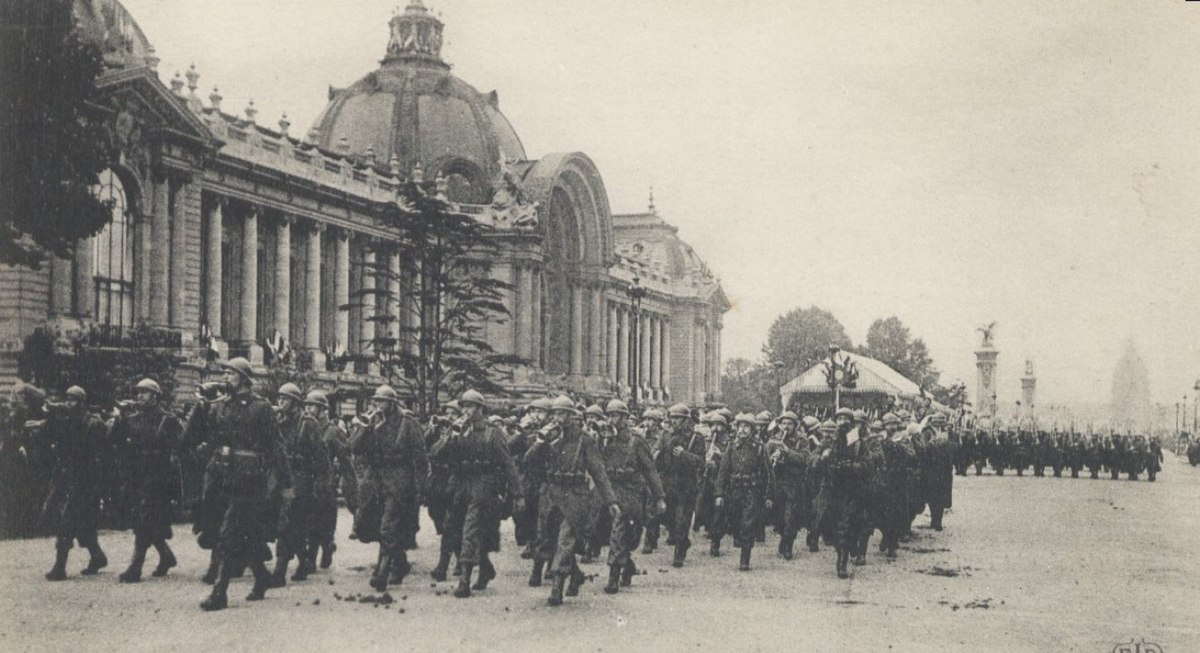
Paris in World War I
Paris, FranceThe outbreak of the First World War in August 1914 saw patriotic demonstrations on the Place de la Concorde and at the Gare de l'Est and Gare du Nord as the mobilized soldiers departed for the front. Within a few weeks, however, the German Army had reached the Marne River, east of Paris. The French government moved to Bordeaux on 2 September, and the great masterpieces of the Louvre were transported to Toulouse.
Early in the First Battle of the Marne, on 5 September 1914 the French army desperately needed reinforcements. General Galieni, the military governor of Paris, lacked trains. He requisitioned buses and, most famously, about 600 Paris taxicabs that were used to carry six thousand troops to the front at Nanteuil-le-Haudouin, fifty kilometers away. Each taxi carried five soldiers following the lights of the taxi ahead, and the mission was accomplished within twenty-four hours. The Germans were surprised and were pushed back by the French and British armies. The number of soldiers transported was small, but the effect on French morale was enormous; it confirmed the solidarity between the people and the army. The government returned to Paris, and theatres and cafés re-opened.
The city was bombed by German heavy Gotha bombers and by Zeppelins. The Parisians suffered epidemics of typhoid and measles; a deadly outbreak of Spanish influenza during the winter of 1918-19 killed thousands of Parisians.
In the spring of 1918, the German army launched a new offensive and threatened Paris once more, bombing it with the Paris Gun. On 29 March 1918, one shell struck the Church of Saint-Gervais and killed 88 persons. Sirens were installed to warn the population of impending bombardments. On 29 June 1917, American soldiers arrived in France to reinforce the French and British armies. The Germans were pushed back once again, and the armistice was declared on 11 November 1918. Hundreds of thousands of Parisians filled the Champs Élysées on 17 November to celebrate the return of Alsace and Lorraine to France. Equally huge crowds welcomed President Woodrow Wilson to the Hôtel de Ville on 16 December. Huge crowds of Parisians also lined the Champs Élysées on 14 July 1919 for a victory parade by the Allied armies.
